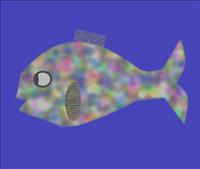
Digital News Report – California’s State Water Resource Control Board reported contamination levels of methymercury and polychlorinated biphenyls (PCBs) in fish caught off the coast of California. They had completed their investigation from a 2009 sampling of 42 locations along the coastal waters in California. This is the first of a two-year survey to determine contamination levels in fish. The government agency is conducting this fish sampling as part of the Surface Water Ambient Monitoring Program (SWAMP).
The fish sampling consisted of sport fish because of potentially being caught by hobby anglers and later being eaten by humans. Too much mercury in fish has been shown to cause serious health problems in humans. In children and young adults, they can develop nervous system ailments and could possibly cause them to have a learning disability.
In the 2009 sampling locations, they focused mostly on areas around Los Angeles, San Francisco, and the San Francisco Bay area. Out of these 42 locations sampled, eight locations that had at least one fish species exceeding the Office of Environmental Health Hazard Assessment (OEHHA) recommendation for being safe for women of childbearing age and for children.
The highest concentrations of methylmercury were found in sharks the most often. There were 33 out of 42 locations that had a moderate degree of methlymercury contamination.
The government agency said that the source of the methylmercury contamination in California came from many sources. It could have come from gold and silver mining, historic mercury, local and worldwide emissions, and runoff from the rainwater and industrial wastewater.
PCBs contamination is also another concern for human health. PCBs are believed increase a person’s risk for developing cancer. PCBs could also cause liver, digestive tract, and nerve damage. It could also cause development problems, reproduction issues, and immune system problems. That is why the government officials also sampled for possible PCBs contaminating fish. They found six out of the 42 locations sampled had at least one fish that exceeded the safe level set by OEHHA for human consumption. PCB contamination could have come from electrical and industrial use of this chemical. The chemical sticks around long afterwards, even though PCBs are banned.
The worst areas for high PCBs levels in fish were the San Francisco Bay and Sand Diego Bay area. In these two sampling sites, they had stood out for having the most elevated amounts of PCBs. There were 31 out of 42 of the locations that had a moderate degree of PCB contaminating the fish.
By Victoria Brown
